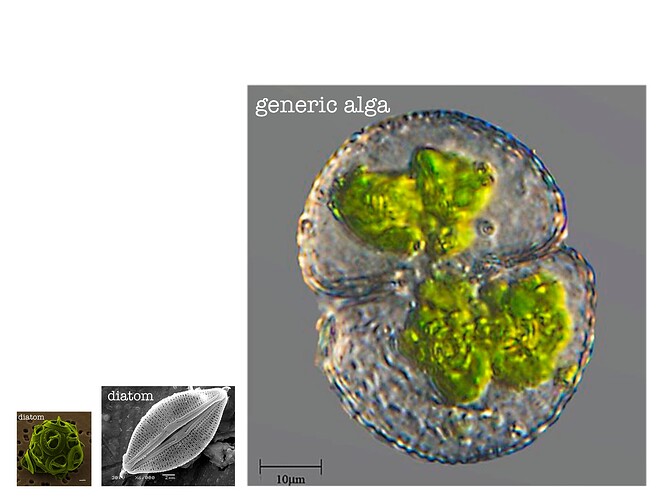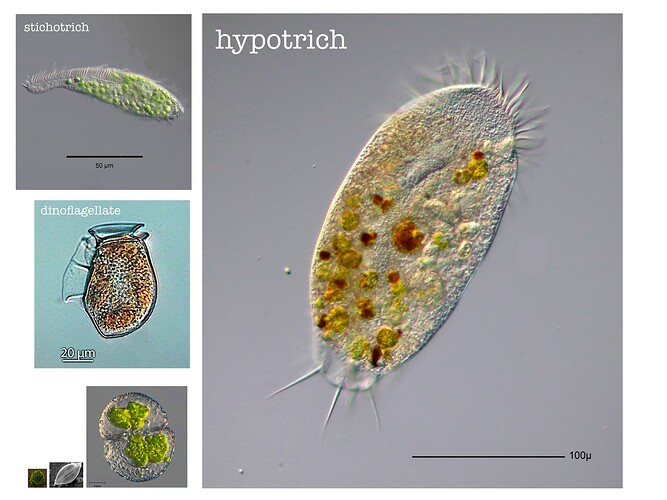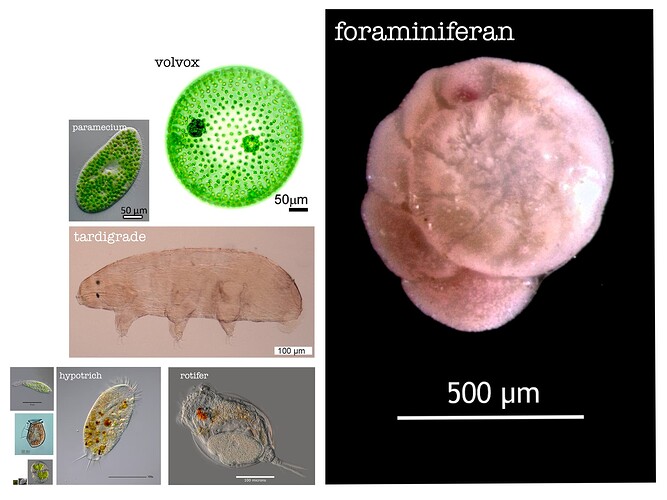In order to find out which is the smallest scale at which microbes can feasibly be represented as clouds, we’d have to know how large our microbes are presumed to be. Single-celled organisms vary greatly in size, and while we luckily all agree that we don’t want to depict atypically large single-celled organisms, we’d do good to reflect on how broad the size variance is in reality vs how broad it is in Thrive.
I’ve made these size comparison sheets a whole while ago, but I don’t think I ever showed them before:
1:
2:
3:
According to wikipedia, most unicellular eukaryotes fall into the 10-100 micrometer range. According to wikipedia, grown tardigrades are about 0.5-1mm in size, so about 500 to 1000 micrometer.
Since the variance for single-celled eukaryotes is much smaller than irl even when disregarding unusually large species, it matters greatly how we define the average size. Is the average Thrive eukaryote about 10 micrometers long or about 10? This will determine the smallest viable scale which we can depict in 3D


